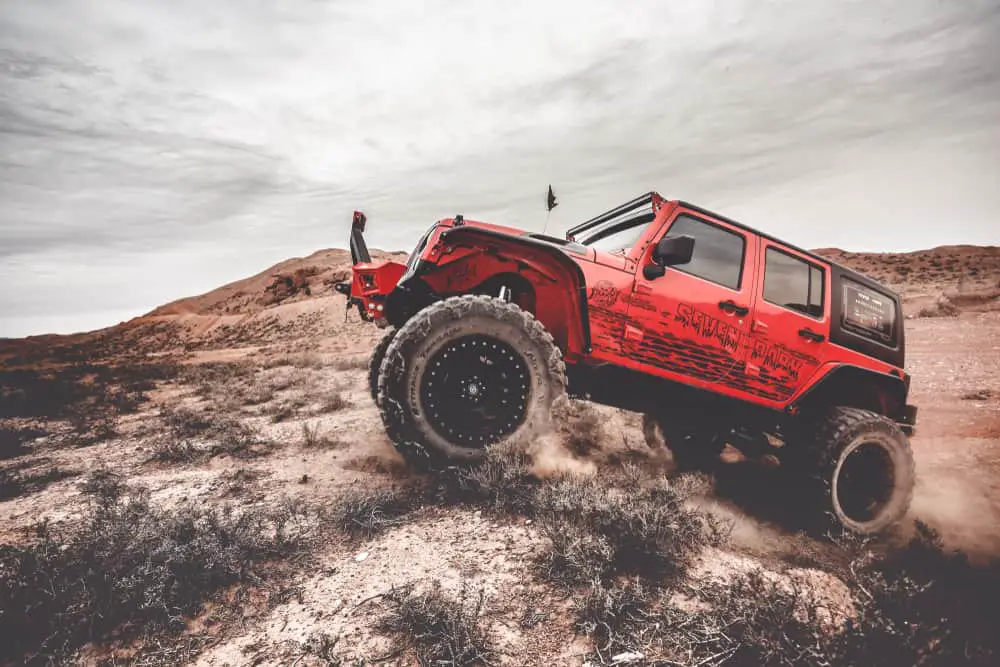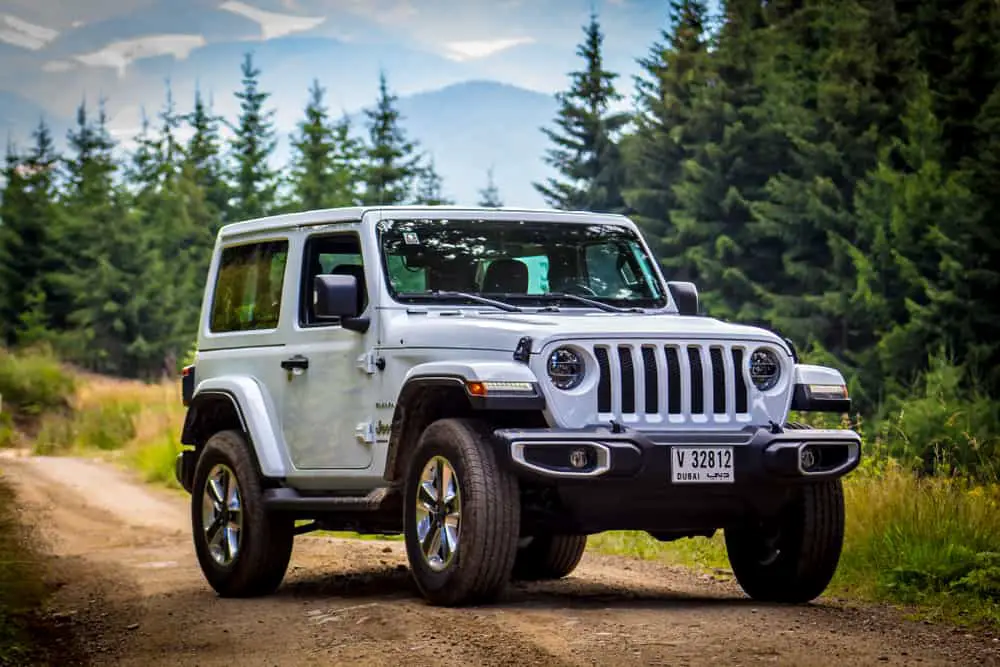
The iconic Jeep brand is synonymous with off-road adventure. Jeep was the first global commercially available 4×4 and has become entrenched as one of the most capable off-road vehicles in the history of the automobile. Rugged engineering design has remained the signature of the Jeep brand.
Sway bars provide a vehicle with lateral stiffness to prevent body roll when cornering. The lifted suspension of the Jeep results in a higher center of gravity, making it easier to roll over. Sway bars counter the vehicle’s ability to lean outwards during cornering, providing it with stability.
The Jeep Wrangler is the most famous model of the modern Jeep family. The Jeep Wrangler is the top-selling American brand off-road vehicle in the U.S., a position that it has proudly maintained for decades. Let’s look at why some owners want to remove the sway bars on their Jeep.
Why Does A Jeep Need Sway Bars?
The Jeep Wrangler is designed with a solid live axle versus the independent suspensions found on other off-road vehicles. On independent suspensions, the axle’s left and right side wheels can move up and down independent of each other.
On a solid live axle, the left and right-hand wheels are connected via a solid axle that is assisted by a sway bar to counter the lift or drop off one wheel by creating an opposing force. The sway bar can be imagined as a bow that creates lateral stiffness to the axle (similar to the bowstring), preventing the vehicle from too much lateral swaying.
The stability provided by the sway bars is essential to provide the Jeep with a stable chassis when driving at speed or when cornering. The hard-core off-roaders don’t like the limited up and down travel that the sway bars induce on the wheels of the 4×4.
On a Jeep, the suspension is set to the terrain that is traveled on. The driver can select a stiffer suspension setting for highway driving, and on rocky off-road tracks, a softer suspension setting can be selected. The softer the suspension setting, the more the left and right wheel can move in opposite directions and is known as the articulation of the axle.
For off-roading, it is best when all four wheels contact the road surface and provide traction. When driving through a rut where the wheel on the one side goes down into the rut and the other wheel is pushed up by the stiffness of the lateral force of the sway bar, the result is that the higher wheel may be lifted off the surface of the track.
The lifted wheel loses traction, and the differential lock must transfer torque to the other wheel that still has traction. The ideal would be to lose the torsional stiffness of the sway bars in such situations so that both wheels can remain in contact with the road and provide traction.
The advantage of the Jeep design is that many off-roaders have expressed the need to disengage the sway bars when more articulation of the axles is required, typically in off-road trail conditions. Solutions have been developed and approved by Jeep to provide more lift than the standard factory setting and the ability to disconnect the sway bars in selected applications.
Disconnect sway bar systems can be fitted to the Jeep axles that will allow the driver to manually disengage the sway bars before starting an off-road excursion where maximum articulation will be required. When the trail is completed, the sway bars can quickly and easily be reconnected to provide the suspension stiffness safe for high-speed driving on paved surfaces.
Some Jeep owners have elected to replace the sway bars completely with stiffer coil springs. The fitment of stiffer coils springs will somewhat compensate for the lateral stiffness required and better articulating the axle in severe off-road conditions.
These stiffer coil springs do not provide the same high-speed stability or cornering ability as the sway bars on a standard Jeep. Due to the sacrifice instability and the fact that Jeeps have high centers of gravity, this is not a recommended route to follow.

Can A Jeep Drive Without Sway Bars?
As they are also known, the sway bars or torsion bars are integral to providing torsional stiffness to a vehicle. Cars and trucks are fitted with sway bars to assist in the stabilization of the chassis.
Imagine the four wheels of a car fixed only to the ends of the two axles. When the corners of the vehicle, the inside wheels rotate slower than the outside wheels, and the body’s inertia tries to make the vehicle go straight. The wheels are turning, and the body is resisting the turning due to inertia.
The absence of sway bars creates an unstable situation that may lead to a loss of control of the vehicle and even a roll-over accident. In modern vehicles, the wheelbase is wide to provide more cornering stability, and the chassis is stiffened by the addition of sway bars to prevent body roll.
The entire suspension consisting of the frame, axles, sway bars, shock absorbers, and tie rods work in unison to keep the wheels of the vehicle in contact with the roadway while keeping the motion of the cabin stable and comfortable.
The sway bars can be removed from this system in certain road conditions where greater axle articulation is desired, but only a fool will drive their Jeep without the sway bars in highway and public road situations.
Conclusion
Sway bars play an important role in stabilizing a Jeep during cornering or high-speed lane changes and emergency braking. The fact is that most Jeeps will never be exposed to the severe off-road conditions where severe axle articulation is required and are suitably designed to deal with very tough off-road conditions.
For the extremist, the options of fitting a quick-release sway bar system on their Jeep do exist and has been fully developed. Be sure that you will need this solution before having it fitted. Beware of making changes and modifications just for the sake of gaining some bragging rights.
The Jeep family of off-road SUVs is highly regarded as very capable off-road vehicles, and they are up to some serious adventure driving in their standard factory design.


